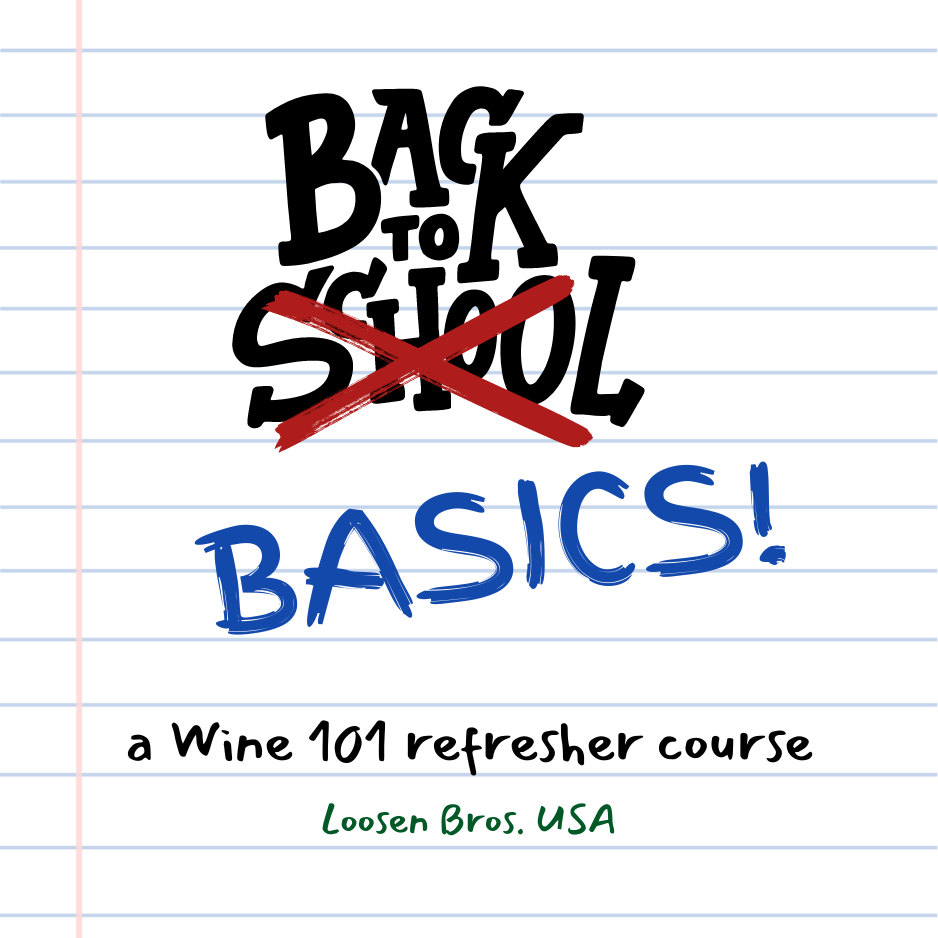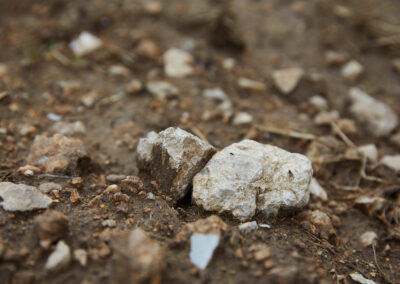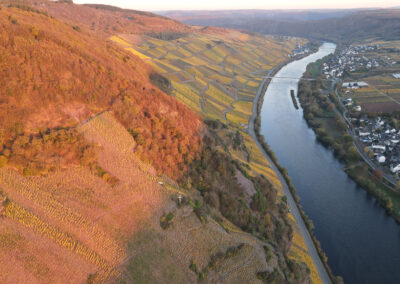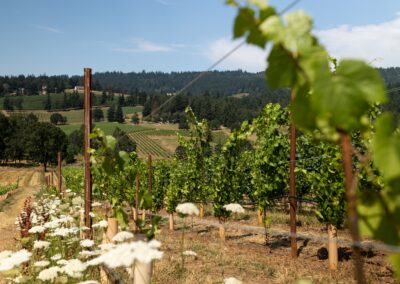Our Back to Basics series is ready to start its second term! Join us for a light-hearted refresher course on fermentation, wine closures,
wine body, and tannins.
Fermentation
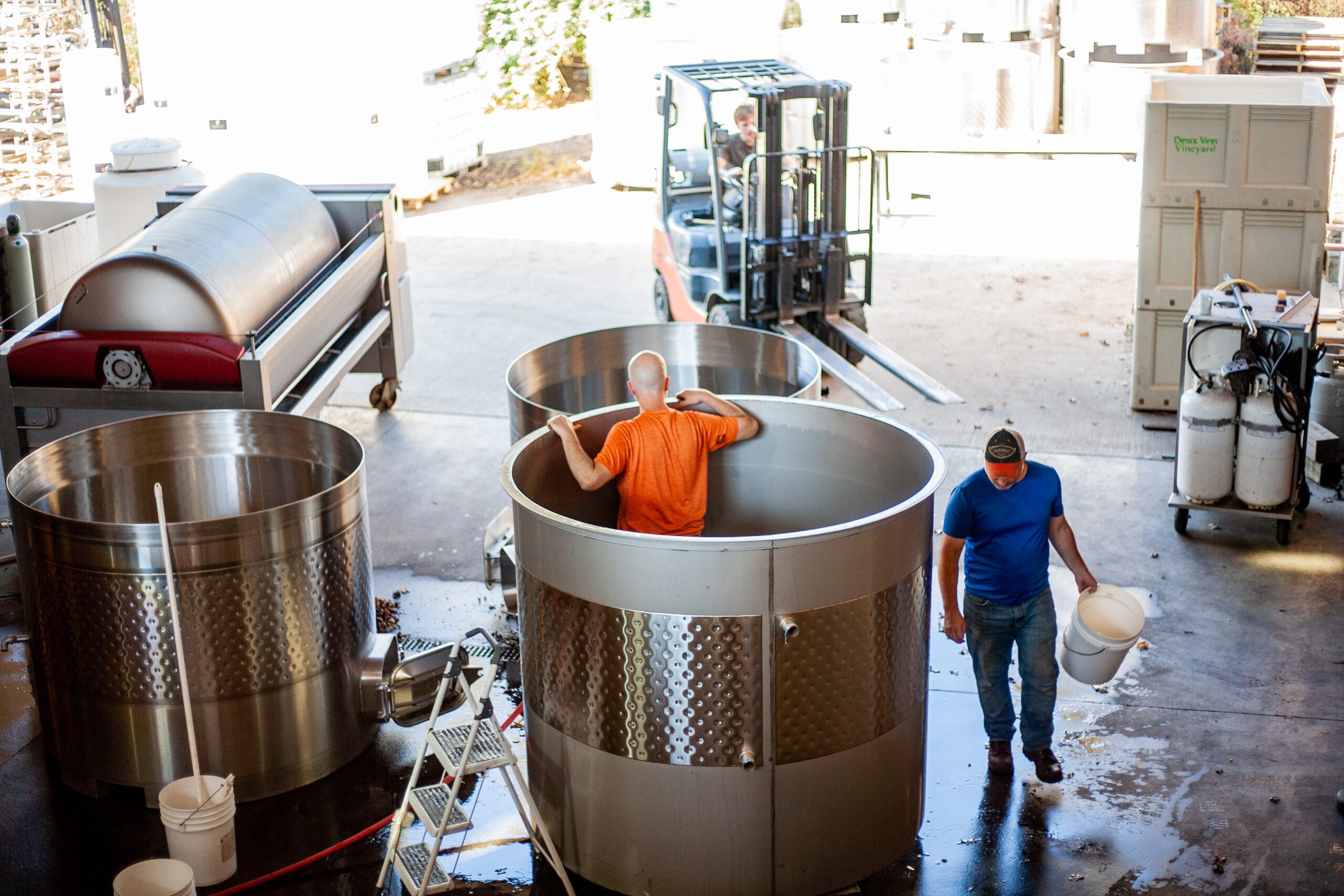
Appassionata Estate cellar team cleans stainless steel fermentation tanks in preparation for harvest
Fermentation is the first step in the winemaking process after the grapes have been harvested. Yeast is what makes fermentation possible; it eats the grape sugars and turns them into alcohol. Spontaneous fermentation relies on the yeast naturally found on the grapes and in the cellar, rather than a commercially cultivated yeast that is added to the juice. While using natural yeast can be challenging, as it is unpredictable, the resulting wines are typically rewarded with more complex aromatics. Winemakers may choose to use commercial yeast to produce very consistent wines each vintage.
At Dr. Loosen, for example, all of the dry Rieslings are fermented spontaneously with indigenous yeasts. But the Prädikat wines are fermented with a combination of natural and cultivated yeasts – each in its own fermentation vessel – and then blended together at bottling. This allows them to preserve the fruit purity with commercial yeasts, while adding the complexity inherent in natural yeasts.
The initial fermentation process is followed by malolactic, or secondary fermentation. Yeast remaining from the initial fermentation continues to eat at the acidic compounds in the wine as it settles in barrel or tank. Sharp-tasting malic acid transforms into creamier lactic acid. Most red wines go through malolactic fermentation, but that is not the same for white wines. Chardonnay develops a rounder, creamier character when it goes through malo, which is desirable for certain styles of that grape variety. Our producers typically avoid malolactic with Riesling, however, because they want to maintain the bright natural acidity that is the distinctive backbone of the variety.
Types of Wine Closures
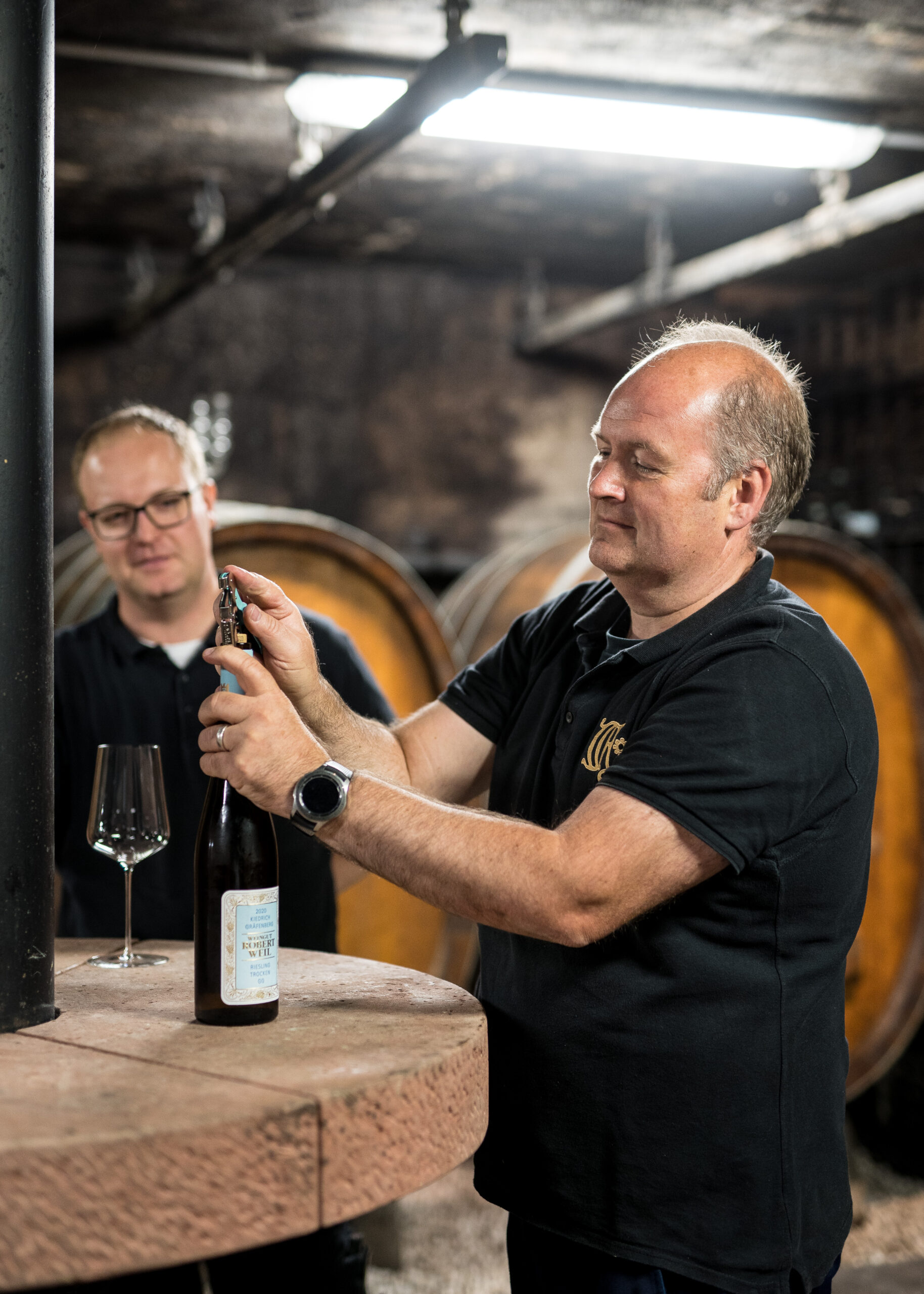
Popping the natural cork from a bottle of Riesling in the Robert Weil cellar
There are extensive options available to seal a wine bottle. These different types of closures range in size, material, environmental impact, ageability, etc. Let’s explore three of the most common closures: cork, screwcap, and synthetic cork.
Cork
Natural cork is the world’s most popular wine closure and has been used since ancient Greek and Roman times. Cork comes from the bark of the Quercus suber tree, also known as the cork oak tree, which grows in abundance in Spain and Portugal. Harvesting the cork can be done in a way that does not harm the tree, so it is a very sustainable product. Cork is very porous which is a benefit for cellaring wines. Small amounts of oxygen pass through these tiny holes in the cork allowing the air to interact with the wine. Over time, this can transform the aroma and flavor of a wine, giving us the tertiary compounds that can only develop through time and make a well-matured wine so engaging and rewarding to drink.
Screwcap
The screwcap was invented in Australia back in the 1960s as a way to combat cork taint. Natural corks are susceptible to TCA, a chemical compound that affects wood-derived materials, that is harmless, but undesirable as it can transfer mildew-like scents to the wine. Screwcaps are made of aluminum meaning there’s no real threat of TCA to wines that use this closure. Little to no air can come into contact with a wine with a screwcap which dramatically slows down the aging process. This closure is especially well suited to aromatic white wines that are meant to be consumed within five to 10 years, as it preserves the freshness and fruitiness in the wine. Also, their ease of opening makes them ideal for on-premise glass-pour wines.
Synthetic Cork
Synthetic cork can either be made of petroleum-based plastics or plant-based materials. Just like screwcaps, synthetic cork is less susceptible to cork taint and the oxygen transfer rates are much more predictable. Synthetic corks are very durable and won’t degrade or dry out; meaning, bottles in a cellar wouldn’t have to be stored on their sides to keep the corks damp. These durable corks also won’t break apart with a corkscrew (at least not easily) mitigating the risk of fishing cork crumbs out of the bottle. In our experience, however, we’ve found that screwcaps and natural corks are better at preserving freshness in the wines than synthetic corks. None of our producers are using them.
Don’t miss last semester’s Back to Basics course! Study up here.
Wine Body
We can analyze a wine by discussing its body, or the way it feels on the palate. Wine body is broken down into three categories: light-body, medium-body, and full-body. The main contributor to wine body is alcohol.
Alcohol is what determines wine viscosity and is responsible for the mouthfeel sensations when tasting and drinking wine. There is a positive relationship between alcohol and viscosity; the more alcohol in the wine, the more viscous it becomes. Therefore, full-bodied wines have a high viscosity.
General Classifications
- Light-bodied wines are those below 12.5% alcohol like Riesling and Prosecco.
- Wines between 12.5% to 13.5% alcohol are medium-bodied, such as Pinot Noir from Burgundy.
- Full-bodied wines are 13.5% alcohol and above. Think Shiraz/Syrah, Cabernet Sauvignon, and Merlot. Chardonnay is one of the few white wines that can be considered full-bodied.
Tannins
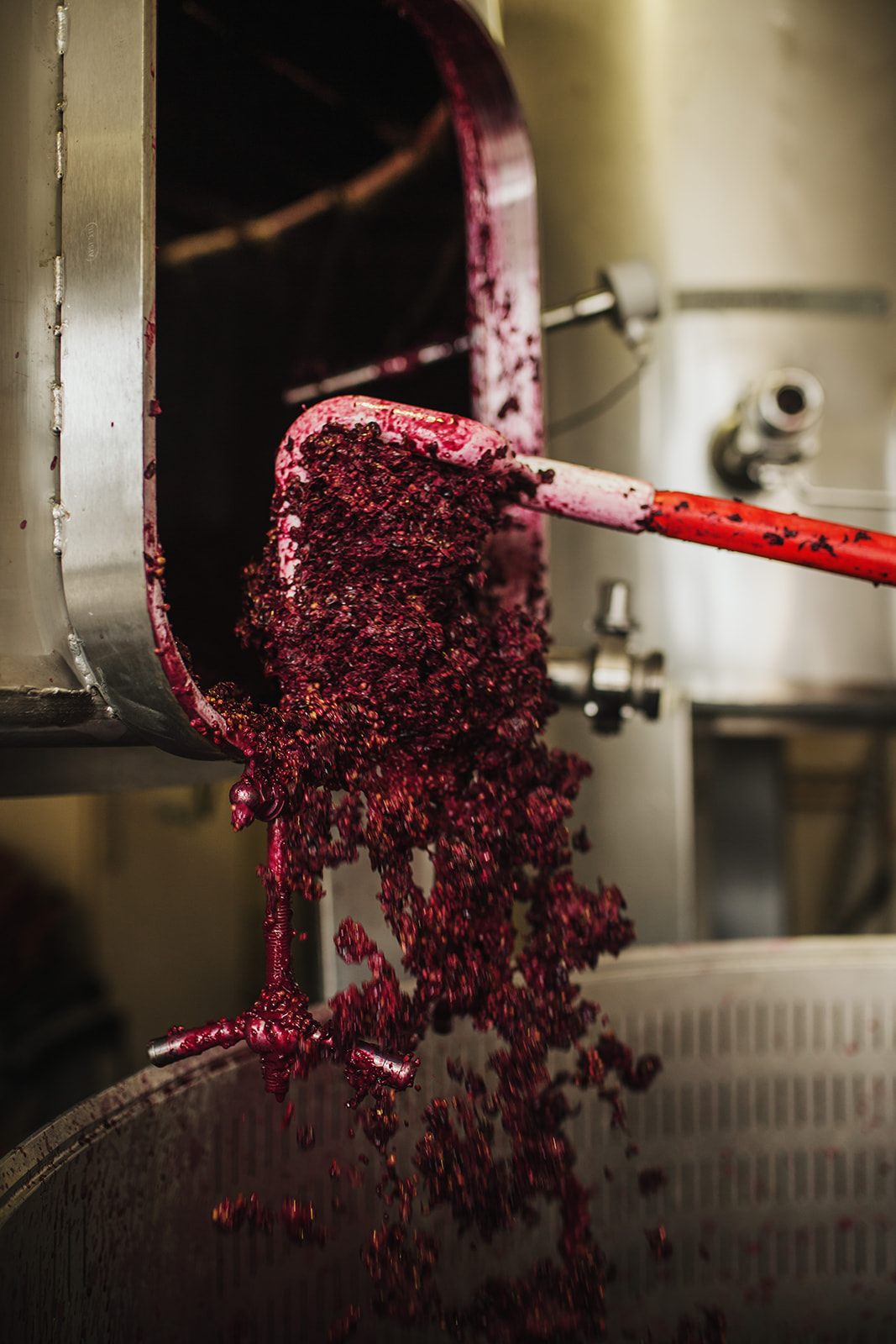
Shiraz grapes from Jim Barry are processed during the 2020 harvest
We can continue our wine analysis by exploring the complex world of tannins. Tannins are a naturally occurring phenolic compound found in grape skins, seeds, and stems that provide texture, balance, and structure to a wine. Tannins are also integral to wine ageability—highly structured, tannic wines are built to withstand decades of aging.
Rather than imparting true flavor to a wine, tannins supply texture that can range from soft and silky to aggressive and grainy. Intense tannins may cause a drying or puckering sensation. Because the main source of tannins is the grape skins and stems, tannic influence is impacted by maceration (soaking the grape skins in the juice). Maceration is what gives the wine its color—the richness of this color is determined by the length of time the skins sit in the juice. It’s another potentially positive relationship: longer maceration time leads to darker wines which leads to higher tannin levels. However, too much maceration time can lead to heavy, over-extracted wines that become awkward and out of balance.
Oak barrels can also contribute to wine tannins. New oak barrels will influence wine flavor and tannins the most, diminishing over time with each use. Barrel-derived tannins offer fine graininess to a wine whereas skin, seed, and stem-derived tannins are more bitter.

